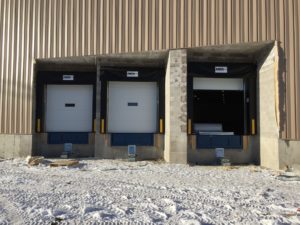
The loading dock is a high-traffic area filled with heavy machinery and is a fast paced environment. There are a number of safety precautions you must take to ensure that all employees are safe while they’re in the loading dock area.
In this post, the Nex team shares 4 of the most common reasons that accidents occur around loading docks and detailed prevention strategies to increase the safety of your workplace. If you have any inquiries about loading docks, contact the Nex team; a representative can be reached at 1-866-400-2050, and we’re always more than happy to help!
Unexpected Departure
One of the biggest ways accidents occur with loading docks is by the unexpected movement of trailers. It is important to have a procedure in place to make sure there is sufficient communication between the truck drivers and the people loading and unloading the trailers. Within this procedure, it is also advised that truck drivers leave the truck during loading / unloading and do not re-enter until the process is complete.
A more reliable and consistent means of prevention involves automating your communication procedure, therefore reducing human error in the process. The easiest way to accomplish this is by installing a traffic light system inside and outside the loading dock area. A green light tells the truck drivers that they can safely back into or leave a loading bay and once parked a red light tells them to stay at the loading dock. At the same time the dock attendants will know when it’s safe to load and unload by an interior red and green light that is operating opposite of the driver’s exterior lights. These lights are automatically triggered by a sensor installed on the dock or the door, and are easy to add to almost any existing loading dock.
Traffic Around The Loading Dock
We highly recommend keeping your loading dock area as open and as clean as possible, ensuring minimal obstructions are in the way. This includes garbage, boxes, pallets piled up, product storage, etc which can obstruct the view of the truck drivers or forklift operators. These obstructions can also limit the required space needed to operate and maneuver all the equipment safely and efficiently.
It is even more important to separate pedestrian traffic from truck or forklift traffic throughout your facility. The lack of visibility and lack of hearing due to regular to extreme noise-levels can make any communication difficult.
Add marked walkways with safety-yellow paint on the ground/floor. Install safety railings around walkways can provide all the physical protection required. Install proper warning signs and mirrors to eliminate blind areas for all involved.
Unexpected Gaps
When a trailer first parks at a loading dock, the gap between the loading dock and the trailer may be sufficient. But when there is extra force applied as a forklift enters or leaves the trailer, the trailer can shift away from the loading dock, leaving a gap that may cause the lip of the dock leveler fall off the bed of the trailer and the dock leveler to fall. There have been many accidents and injuries caused by this happening.
It is not only highly recommended but is a requirement to secure the trailer. The use of wheel chocks to brace and secure the trailer is the more common and least expensive means to accomplish this. Have wheel chocks installed along with the correct signage and a process to communicate the requirement.
A stronger method to keep the truck in place is by using a type of vehicle restraint. There are various types of vehicle restraints that can either secure a trailer by the ICC bar or by the wheels. These vehicle restraints can be automated to work with dock levelers, doors and the traffic lights to provide a complete automated sequence of operation.
Improper Service & Lack of Maintenance
If your loading dock equipment is not properly serviced and maintained, the chances of an accident occurring is greatly increased. Ensure that you have a reliable and reputable company that is properly trained maintain your equipment.
Safety and preventative maintenance inspections are important for so many reasons. They ensure that your employees are using safe equipment, that you are getting the most out of your investment, and that you are proactively performing repairs to reduce downtime and increase productivity. Have all of your equipment inspected on a schedule that suits your usage and demands.








